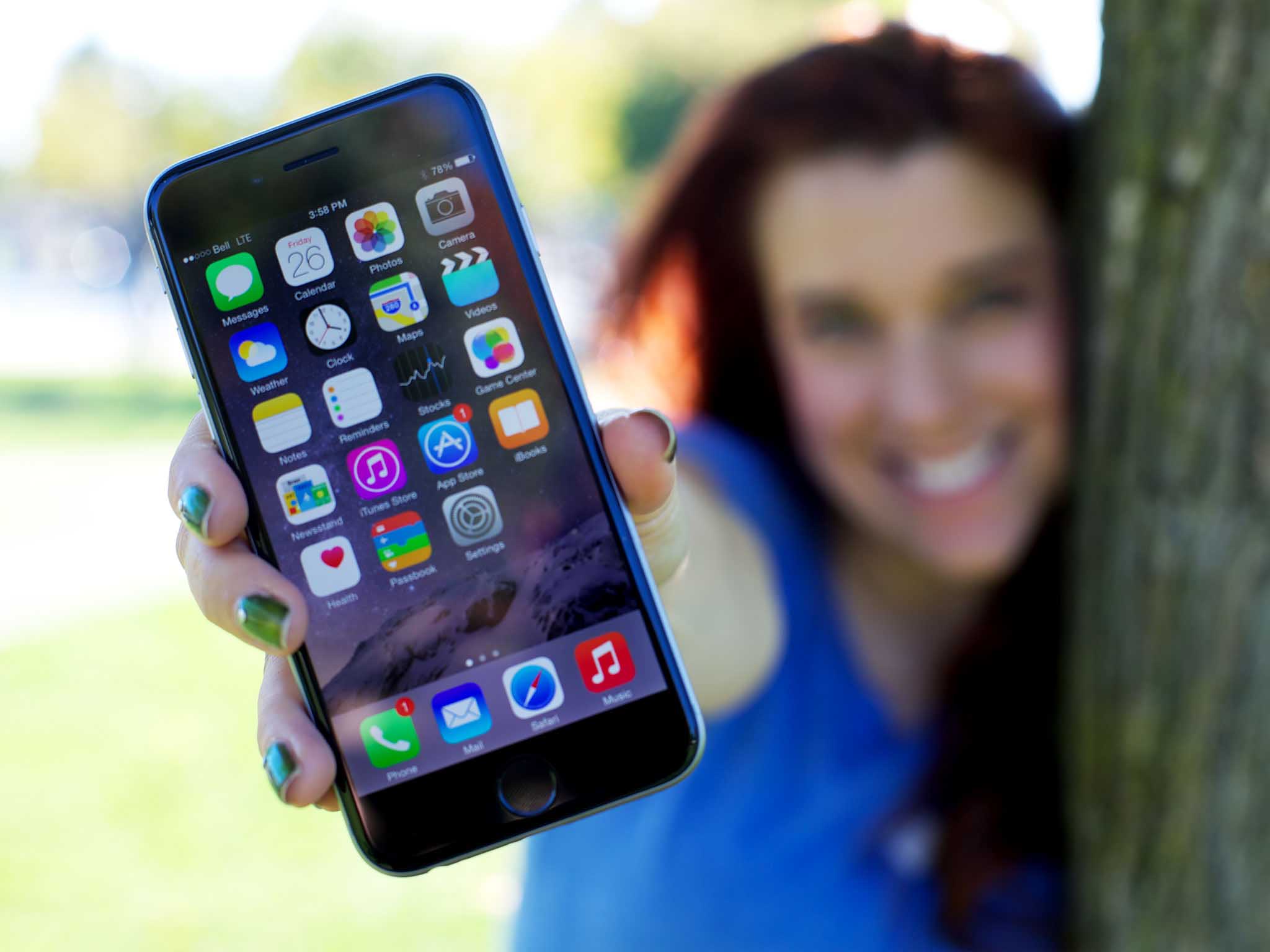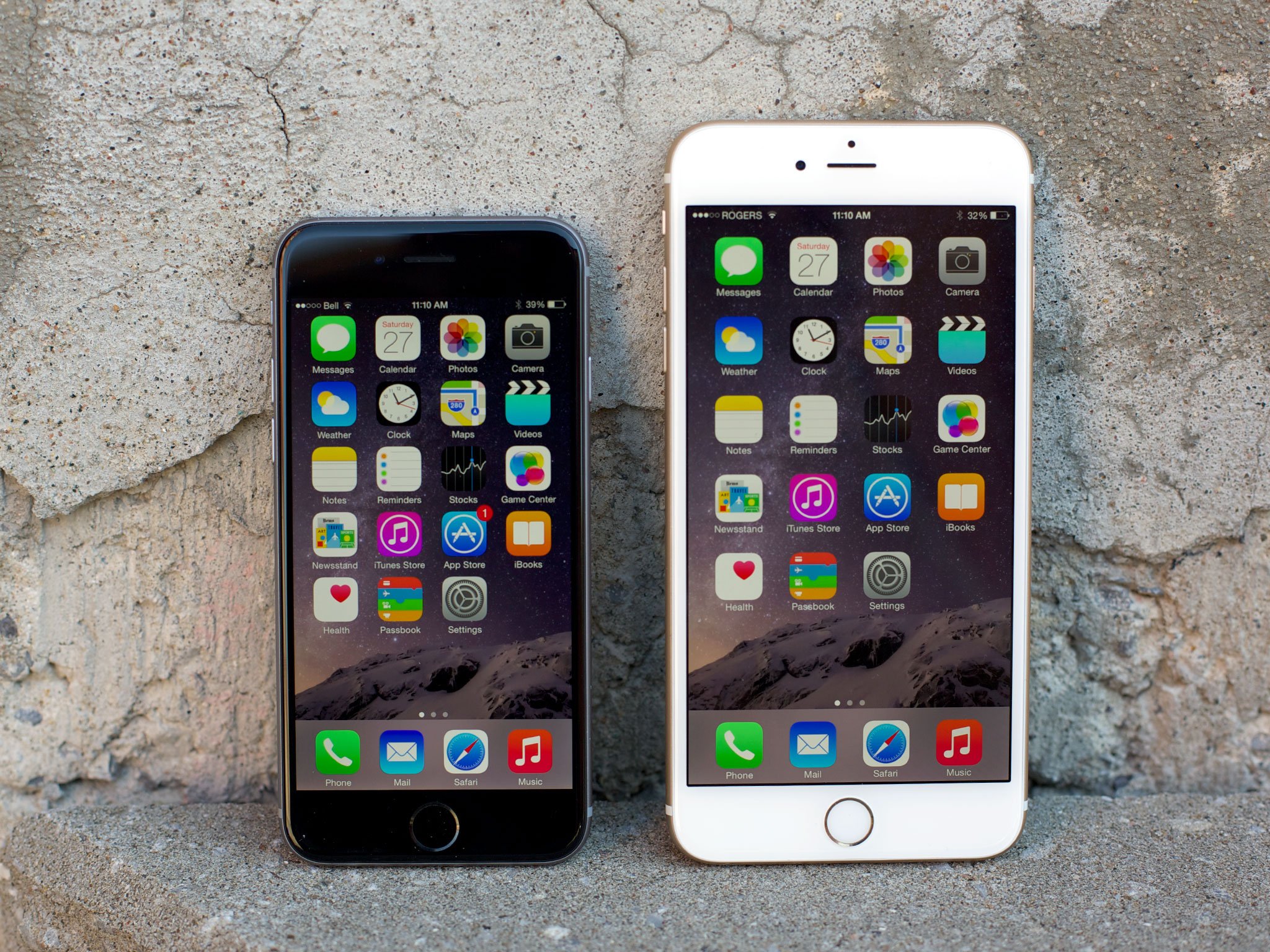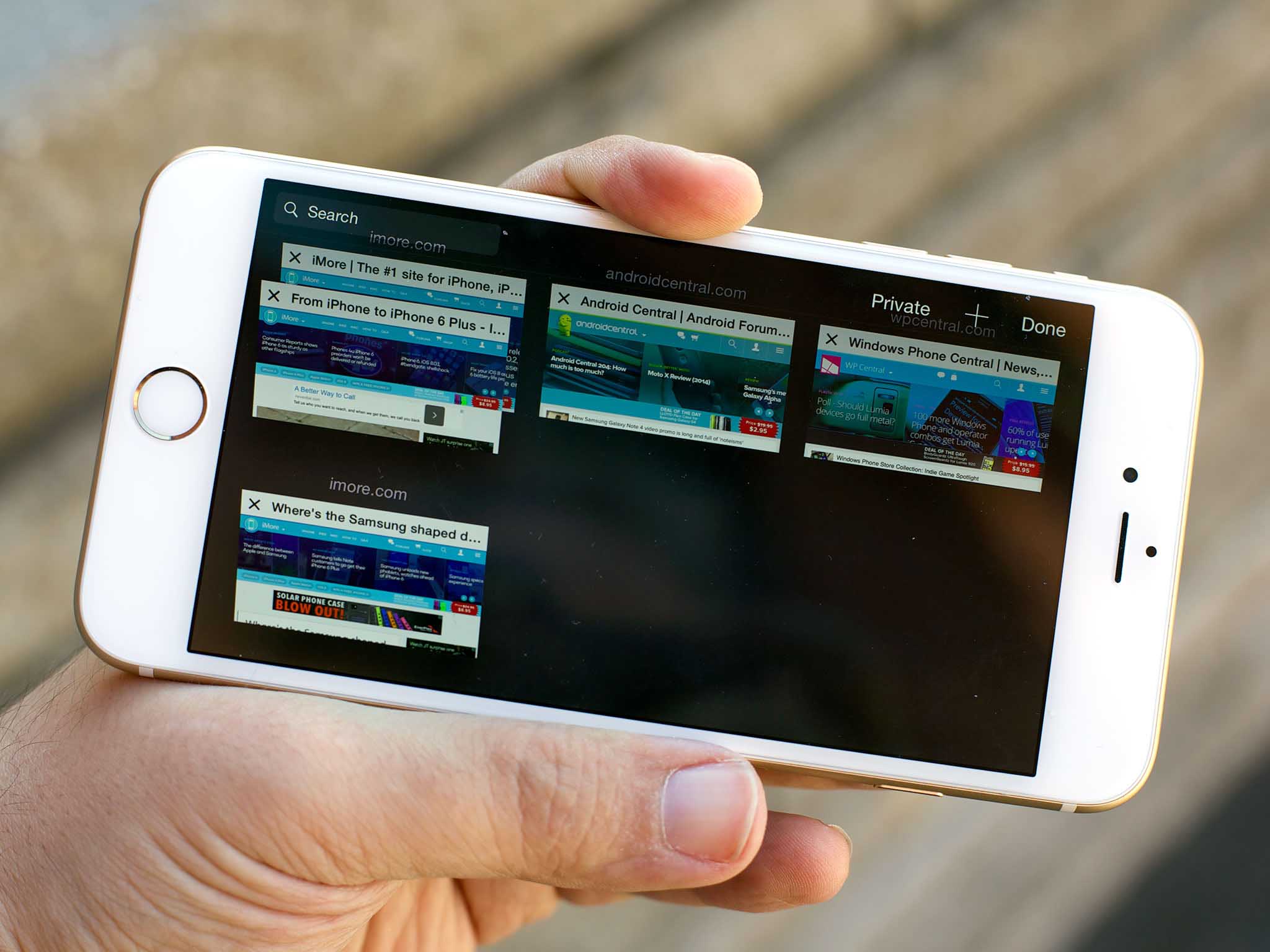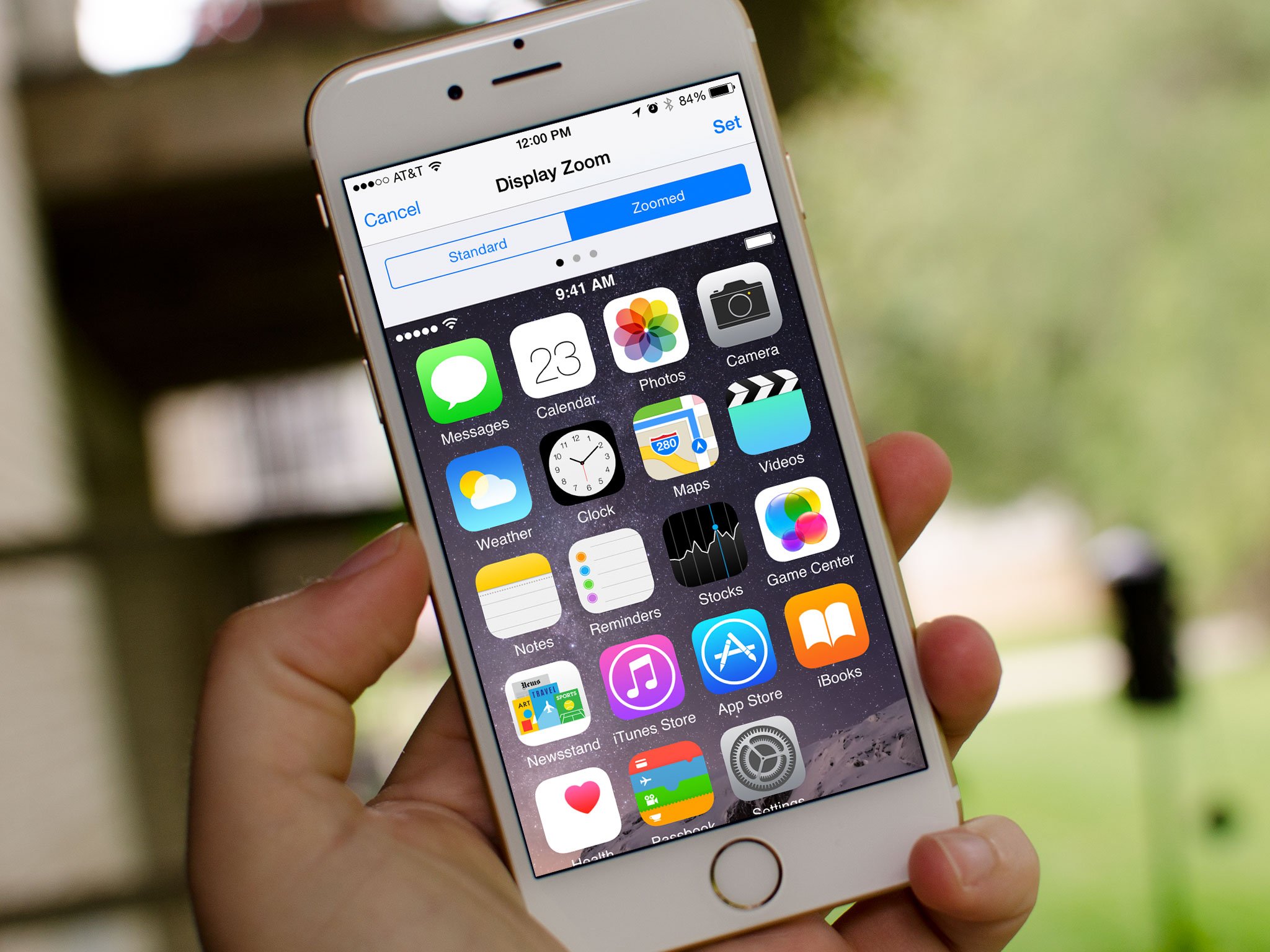Switch to iPhone: For a bigger and better display

There's never been a better time to switch to iPhone. Whether you're tempted for yourself or looking to help the Android user in your life, the all-new, all-bigger iPhone 6 and iPhone-6-plus make the move more compelling than ever — starting with the new 4.7- and 5.5-inch screen sizes.
Big and bigger

Previously, if you wanted an iPhone, you had to make do with a screen that was 4 inches or less. If a bigger screen was more important to you, you had no Apple-created option — it was Android or bust. Today, you can have both — your bigger screen and Apple's iOS operating system.
The iPhone 6 offers a 4.7-inch Retina HD display with 1334x750 pixels at 326 ppi. That's a real sweet spot for people who want a bigger screen for games, surfing the web, exchanging messages, and more, but still want something they can easily hold in their hand, keep in their pocket, or slide into their purse.
The iPhone 6 Plus offers a 5.5-inch Retina HD display with 1920x1080 pixels at 401 ppi. In portrait mode, it's a bigger iPhone; in landscape, it's almost like a tiny iPad. It's perfect for those who want more of everything.
Big and better

As we mentioned above, Apple wasn't the first to build a larger screen on a phone. The company wasn't going to build a big phone just to fit in an early, inefficient LTE radio, nor did they want to create a larger screen when the devices required compromises like PenTile sub-pixel arrangements or over-saturated colors. That's why, when Apple made bigger displays, the company also made better displays.
It starts with the LED-backlit LCD panel itself. Apple is now photographically aligning the liquid crystals using ultraviolet light. That significantly reduces the chance for bleed, which helps keep blacks dark and text crisp. It makes everything look better, from videos to books.
Apple has also gone from single-domain to dual-domain in-plane switching (IPS to DD-IPS) for the panel. IPS is terrific when you're by yourself, looking straight-on at your display. DD-IPS helps compensate for uneven lighting and color distortion, so it provides for even wider viewing angles and pretty much the best contrast ratio in the industry. That's not only better than previous iPhones, it's better than the AMOLED screens used on other bigger phones. That makes it terrific when you're with family, friends, and colleagues, and you want to share what's on that newer, bigger display.
Master your iPhone in minutes
iMore offers spot-on advice and guidance from our team of experts, with decades of Apple device experience to lean on. Learn more with iMore!
There's even a new polarizer. It's designed to prevent the typical interference you get when wearing sunglasses and trying to look at your screen. So, instead of colors darkening, shifting, or disappearing entirely as your rotate your iPhone, they look as close to the way they're supposed to look as possible. That way you can get on with enjoying both your iPhone and your fun in the sun.
Anandtech thought the display was almost too good to be true:
Overall, it's hard to find any criticism for this display. I would normally be incredibly suspicious to see these numbers on a smartphone, but the fact that there's a hot pixel in the center of the display suggests to me that this was not a cherry-picked unit. The fact that I find this level of calibration to be suspicious speaks volumes about how good this display is. While contrast isn't AMOLED levels of black, there are no purple smearing effects, noticeable uneven luminance near black, or any other idiosyncrasies.
The display isn't just more advanced, it's thinner. It's so thin, pixels on the iPhone 6 and iPhone 6 Plus not only look like they're embedded into the glass, but that they're just below the touch surface itself — they're sharper, clearer, more colorful, and viewable at wider angles than ever before.
That's great for you, and great for those you want to share with.
Bigger and more accessible

Apple has always paid special attention to Accessibility, making the iPhone as inclusive to as wide a range of people as possible. That's why, when they made the iPhone 6 and iPhone 6 Plus, they also made "Display Zoom", which lets you choose not to see more content, but bigger content.
With Display Zoom, the iPhone 6 and iPhone 6 Plus can make everything bigger — including text and buttons — so you can read more easily and tap around more reliably. On the iPhone 6, you get the same amount of screen estate as the iPhone 5s, just magnified. The iPhone 6 Plus, in contrast, magnifies to support the same amount of content area as the iPhone 6.
For anyone with visual or motor impairments, it can make the iPhone much, much more accessible than its default settings.
Time to switch!
If the lack of a big screen has been holding you or someone you know from getting an iPhone, the good news is the iPhone 6 and iPhone 6 Plus offer you not only big and bigger screens, but big and better options across the board. It's just one of the benefits you get by switching to iPhone.

Rene Ritchie is one of the most respected Apple analysts in the business, reaching a combined audience of over 40 million readers a month. His YouTube channel, Vector, has over 90 thousand subscribers and 14 million views and his podcasts, including Debug, have been downloaded over 20 million times. He also regularly co-hosts MacBreak Weekly for the TWiT network and co-hosted CES Live! and Talk Mobile. Based in Montreal, Rene is a former director of product marketing, web developer, and graphic designer. He's authored several books and appeared on numerous television and radio segments to discuss Apple and the technology industry. When not working, he likes to cook, grapple, and spend time with his friends and family.
